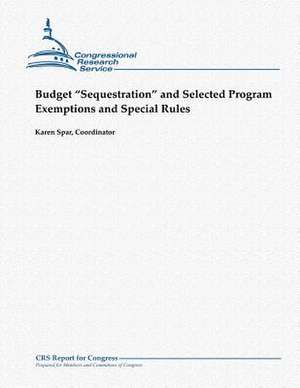Budget "Sequestration" and Selected Program Exemptions and Special Rules
Autor Karen Sparen Limba Engleză Paperback
Preț: 93.43 lei
Nou
Puncte Express: 140
Preț estimativ în valută:
17.88€ • 18.72$ • 14.79£
17.88€ • 18.72$ • 14.79£
Carte disponibilă
Livrare economică 17-31 martie
Preluare comenzi: 021 569.72.76
Specificații
ISBN-13: 9781481070720
ISBN-10: 148107072X
Pagini: 32
Dimensiuni: 216 x 280 x 2 mm
Greutate: 0.1 kg
Editura: CREATESPACE
ISBN-10: 148107072X
Pagini: 32
Dimensiuni: 216 x 280 x 2 mm
Greutate: 0.1 kg
Editura: CREATESPACE
